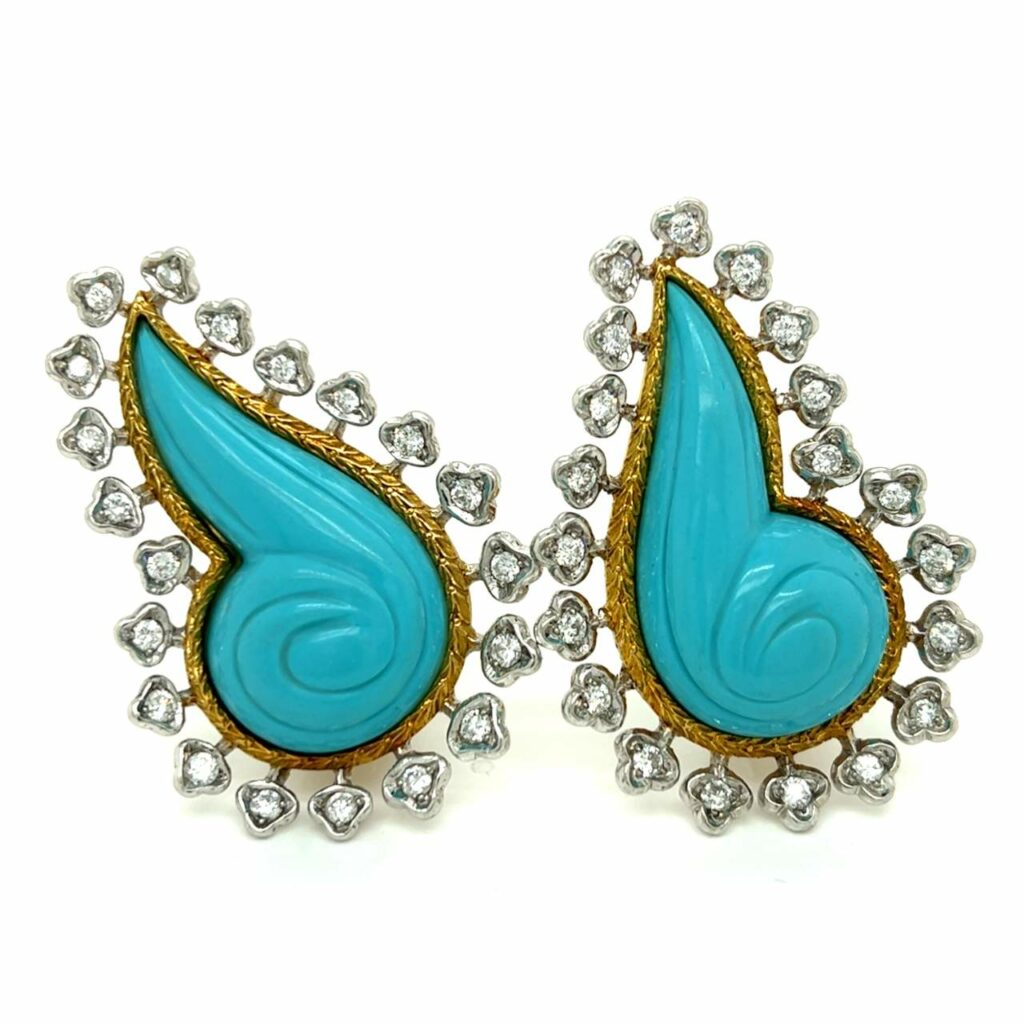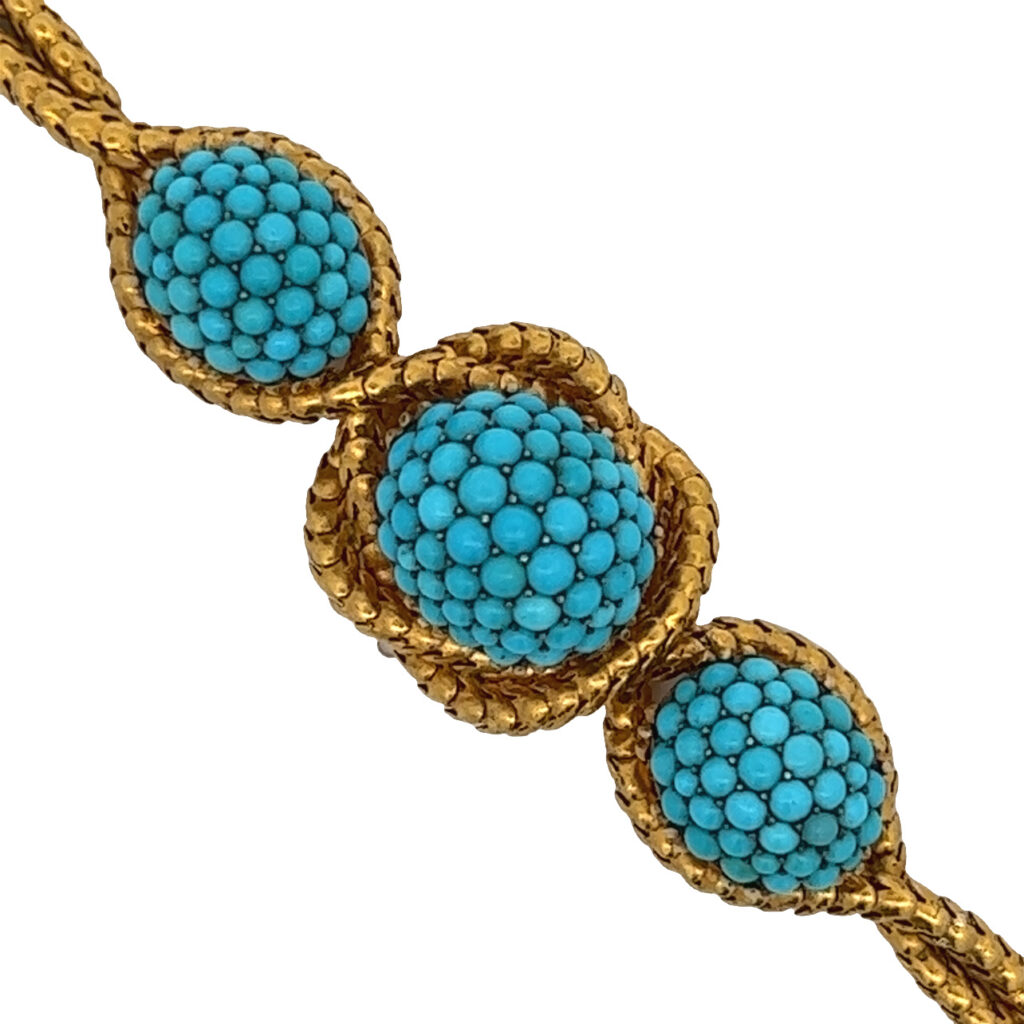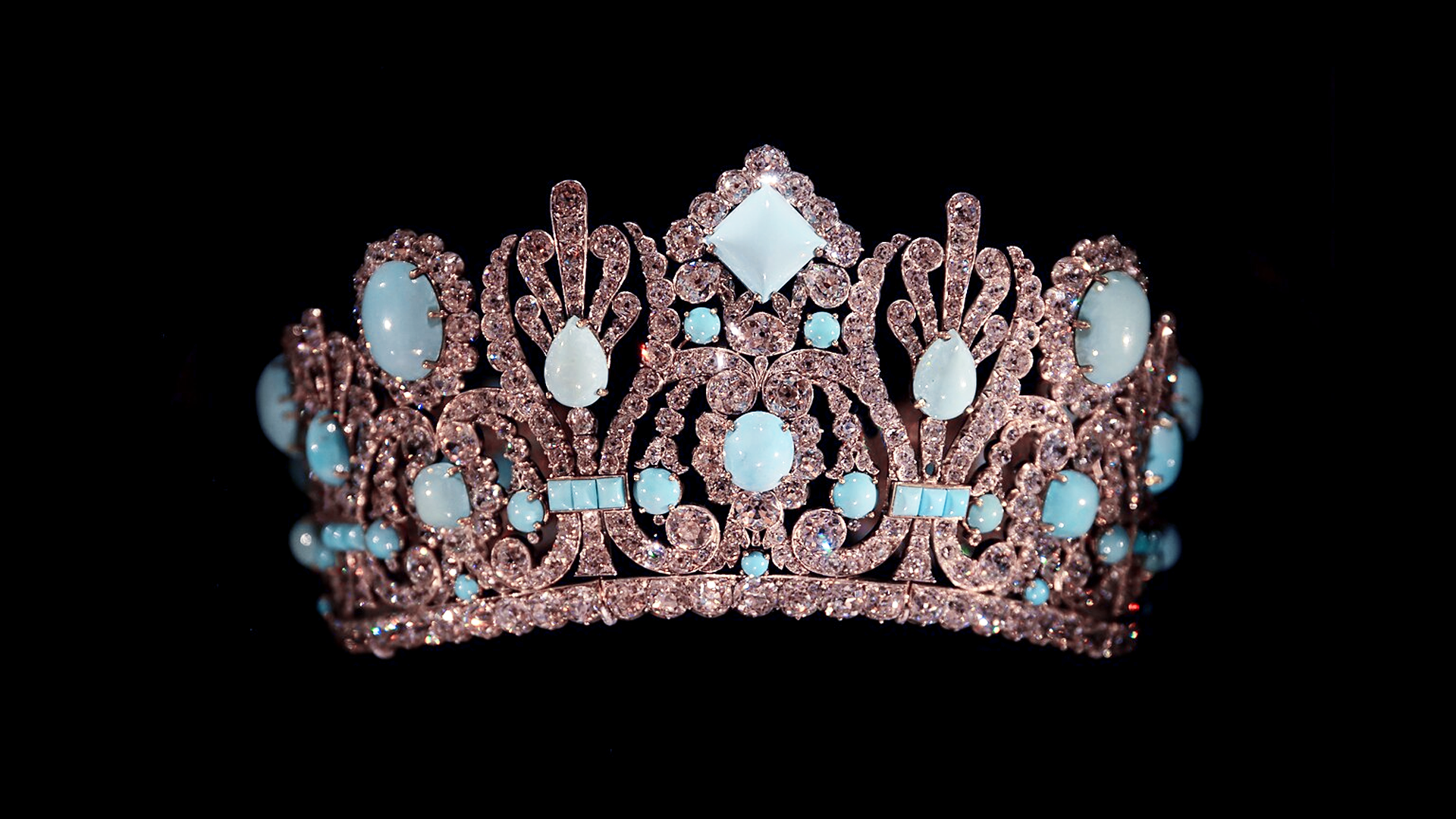The vibrant blue of turquoise conjures up visions of Mediterranean beaches and long sun filled days. While today we associate turquoise with summer and boho chic, it’s an ancient gem that has been beloved for thousands of years dating back to the Egyptians and Mesopotamians. Widely considered to be the first mined gemstone, turquoise beads have been found in Pharaoh’s tombs dating back 4000 years ago.
What is Turquoise?

So how exactly did this ancient stone become a modern favorite? Turquoise is a gem that is found in dry, arid places around the world including Australia, Brazil, Chile, China, Iran, Kazakhstan, Mexico, Sinai Peninsula and the United States . It forms when copper rich groundwater reacts with minerals that contain phosphorous and aluminum, turning into a mix of hydrated copper and aluminum phosphate. Turquoise generally forms in limonite or sandstone, both of which may leave marks on the stone. You will often find turquoise with dark veining running through it. That is known as the matrix, which are marks left by the remnants of the host rock. The most valuable turquoise is matrix free, but there are some people who like the unique patterns that are created in the stone from the matrix.
Mythology of Turquoise

During ancient times the Nishapur region of Iran and the Sinai Peninsula in Egypt were important sources of turquoise mining, with Iran being the supplier of some of the finest material. The Egyptians not only made jewelry from turquoise, but because it is a relatively soft gem, measuring a 5 or 6 on the Mohs scale of hardness, they also carved it into animals and talismans. They called turquoise “mefkat” which means joy and delight, which gives us some insight into how they felt about this blue stone. Not all turquoise is blue, some is more of a green-blue color, which is not as valuable as the coveted sky blue or robin’s egg blue that is so highly prized for its hue.
The ancient Greeks and Romans engraved turquoise for use in jewelry. The Aztecs believed that turquoise was created from the tears of Goddess of the Sky, and the gem was considered a talisman of health, prosperity and love. The Egyptians and Romans also associated turquoise with love. The Hindu’s believe that if you look at a new moon and then look at a piece of turquoise, great wealth will be bestowed upon you. Native Americans used turquoise in ceremonies and jewelry, with each tribe designating it with certain attributes. The Apache tribe believed that if a piece of turquoise was attached to a bow, it would improve the accuracy of the hunter or warrior using it.
Turquoise Comes to Europe

By the 16th century turquoise had made its way to Europe. The word turquoise comes from the French phrase “Pierre Torques” which translates to Turkish stone. Historians speculate that the name developed because it came to Europe via trade routes that went through Turkey. During this time turquoise was thought to protect against poison and falls from horses. By the 17th century, turquoise was worn primarily by the well appointed man.
By the 1800s turquoise was highly desired and very fashionable, so much so that Napoleon Bonaparte gave his second wife Marie Louise a turquoise and diamond crown as a wedding gift in 1810. They weren’t the only royals intrigued by turquoise, Queen Victoria, who ruled England from 1837 until 1901 was a fan of the gem, allegedly gifting her ladies in waiting turquoise framed portrait rings when she married Prince Albert. Turquoise was used to add color and texture to designs, with pieces sometimes covered in the stone. Snakes were an important motif in Victorian jewelry and turquoise was often used to create its scales. Forget-Me-Not flowers, which signify true love in the language of flowers, an important aspect of Victorian life, were the color of turquoise so the gem was considered to be especially appropriate for young women. The combination of gold and turquoise was particularly popular at that time.
Turquoise in Fashion

During the early 20th century turquoise remained popular. It was also mixed with other colored gemstones such as sapphire and amethyst, or other faceted gemstones creating a juxtaposition of smooth and textured stones that gave pieces a more avant garde look for the times. Its popularity subsided a bit during the middle of the 1900s but came roaring back into style during the 1960s and 1970s with the rise of boho chic. Turquoise marries well with the earthy tones and textures that are part of the boho DNA. For boho fashion, turquoise with matrix is a good choice, as it adds more texture to the stone as well as making it more individual, which is important to boho style. At the same time turquoise was often paired with coral and became associated with summer and more casual lifestyles.
Turquoise is easily worn every day, but there are a couple of things to know when you are caring for this lovely gem. Keep it away from heat as it may change the color of the stone or cause it to fracture. Clean it with a soft cloth and warm soapy water. Avoid ultrasonic cleaners and exposure to creams, lotions, hair spray and other cosmetics.
The beautiful blue of turquoise promotes a sense of calm and well-being. It is said to be a stone the goes between heaven and earth offering us a connection to the spirit world while keeping us grounded and besides that, it’s what we all desire in jewelry — pretty.
Top of Page: Diamond, turquoise and silver crown gifted to Empress Marie Louise by Napoleon Bonaparte on the occasion of their wedding, 1810. Made by Etienne Nitot et Fils. Mrs. Marjorie Merriweather Post, donated the crown to the Smithsonian Museum of Natural History, Janet Annenberg Hooker Hall of Geology, courtesy WikiCommons.
Authored by Amber Michelle
